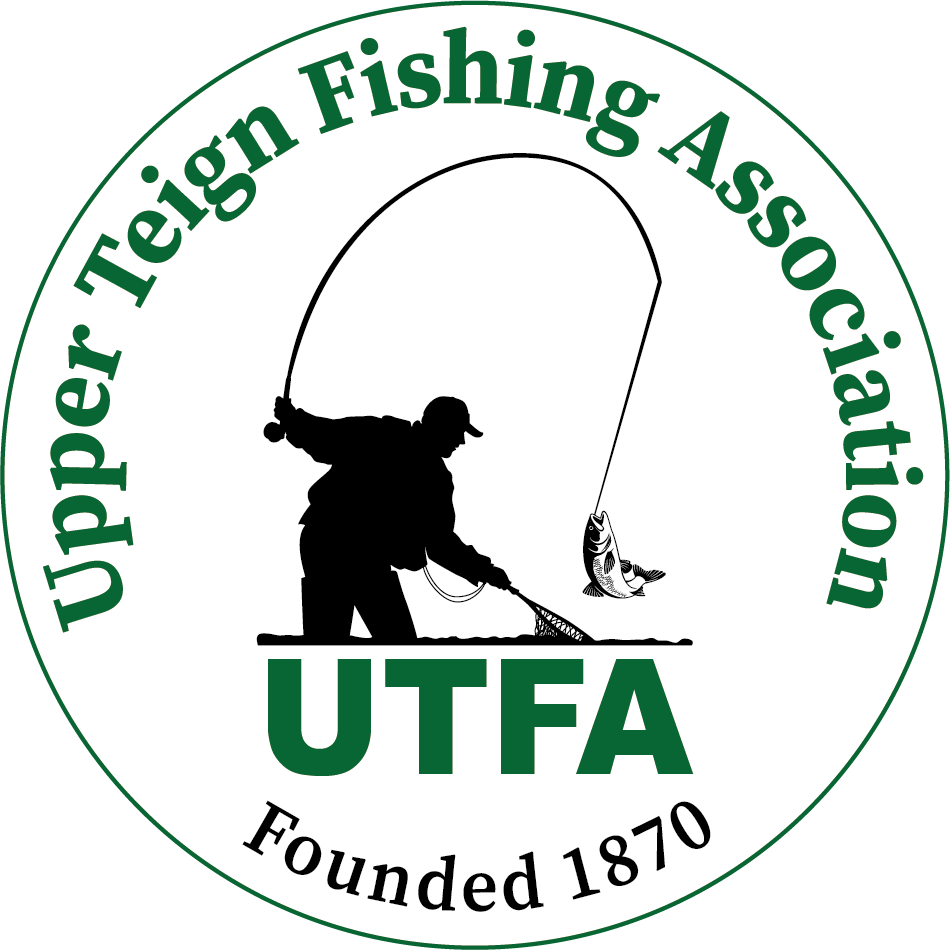RISK ASSESSMENT FOR ASSOCIATION WATERS
This Risk Assessment will be published on the Association website. Copies will be available on request and held at all the permit agencies for inspection by day ticket holders. It will be reviewed annually.
Map References. All map references refer to OS Landranger Series 1:50,000, Sheet 191, Okehampton & North Dartmoor.
| Description and Hazards | Level of Risk |
|---|---|
| Definitions. The Upper Teign Fishing Association (UTFA) will hereinafter be referred to as ‘the Association’. Hazards/Risk. A hazard is anything that could cause harm and risk is the chance, high, medium or low that someone may be harmed by the hazard. | |
| Location. The Association waters take in the upper stretch of the River Teign from Stepps Bridge (Grid Ref: SX 805883), near Dunsford, through to two fields above Chagford (Grid Ref: SX 694879). | |
| Landowners. The land along the length of the Association water is variously owned by a number of landowners, including the National Trust, the Hayter-Haymes estate, the Woodland Trust and individual private and commercial interests. The Association is not responsible for the upkeep and maintenance of any of this land, its fences, gates, styles, tracks, river banks, fallen trees etc, except where the land is owned by the Association between (Grid Ref: SX 695879 to SX 697879). | |
| Riparian owners. The Association rents the majority of its angling rights from three major riparian owners, the National Trust, the Bovey Castle Hotel and the Hayter-Haymes estate. The Association owns the riparian rights on 3 short stretches of water between, on the left bank (Grid Ref: SX 694879 to SX 697879), right bank (Grid Ref: SX 695879 to SX 696878) and left bank (Grid Ref: SX 735898 to SX 744899). | |
| Access for private cars. Access by car, or any other vehicle, is only available for Full Members who have authority from the Association Secretary to use the forestry track between the entrance to Upperton Weir Pool at Clifford Bridge and Upperton Weir for night time Sea Trout fishing. | |
| Speed limits. The speed limit for cars gaining access along the forestry track to and from the Clifford Bridge entrance to Upperton Weir Pool is strictly limited to 10 mph, whether by day or night. Drivers are to give way to pedestrians/horses/cyclists when and where appropriate. | |
| Public Access. The Association has approximately 90-120 members fishing for Salmon, Sea Trout and Brown Trout. Additionally Day Tickets are available to members of the public. Public rights of way follow the length of the river from Steps Bridge (Grid Ref: SX 805883) to Chagford (Grid Ref: SX 694879), sometimes on both banks. Members of the public are inclined to throw sticks into the river for their dogs to retrieve. This is of itself a hazard to the dog and to anglers and causes serious erosion of the banks. Anglers need to be aware of this and therefore need to be vigilant particularly when back-casting. | LOW- MEDIUM. |
| Nature of the river. The River Teign is a fast flowing spate river, draining from the high moorland above Chagford on Dartmoor. From Chagford (Grid Ref: SX 694879) the waters pass through meadows down to Drogo Pool (Grid Ref: SX 723896) where the river runs through a steep sided woodland gorge down to Upperton Pool (Grid Ref: SX 765901), before easing again below Upperton Weir (Grid Ref: SX 765901) down to Clifford Bridge (Grid Ref: SX 781898), whence it runs on down to Stepps Bridge (Grid Ref: SX 805883). Throughout its length the river bed is mostly rocky and boulder strewn and some of the pools are very deep with steep sided banks where access is often very difficult. | MEDIUM-HIGH. |
| Nature of the risk. The river is by its very nature a risk to fishermen, bailiffs, working parties and to members of the public venturing close to its banks and when wading. The nature of the fishing forces anglers to wade most of the time and care has to be exercised in coping with a fast flow and an essentially rocky, boulder strewn bed. If those who venture near to, or who wade in the river, are careful and mindful of the inherent risks, the overall level of risk is assessed as manageable. Anglers need to take great care when wading and use a wading staff and a wading belt when wearing chest waders. | MEDIUM. |
| Specific Hazards. Fishing will be conducted during both daylight hours and by night, the latter specifically for night time Sea Trout fishing. Clearly all risks become much greater at night when anglers must take greater care and use torches when and where appropriate. See below… | |
| Weirs. There are weirs at Stepps Bridge (Grid Ref: SX 805883), below Upperton Pool (Grid Ref:SX 765901), below Fingle Pool (Grid Ref: SX 741897), below Drogo Pool (Grid Ref: SX 723896), at Mill End (Grid Ref: SX 713893) and at Chagford Weir (Grid Ref: SX 699881). The weirs are potentially dangerous and anglers are not permitted to climb onto them for any reason. | HIGH. |
| Banks. The river banks are for the most part secure and firm but care has to be exercised when entering the river from the bank. Some of them have vertical drops and roots which cannot be relied upon to provide support to gain either access or egress from the river bed. The worst damage is caused by dogs eroding the banks where they enter the river and through digging holes along the river bank. Anglers need to take extra care along the edge of the banks, especially at night when sea trout fishing. | Level of risk during daylight hours: MEDIUM, during the hours of darkness the level of risk is: HIGH. |
| River bed. Except where the river bed is sandy in the upper reaches above Mill End/Dogmarsh Bridge (Grid Ref: SX 712894), it is for the most part a gravel bed at best and boulder strewn and difficult to wade without care for most of its length. | MEDIUM – HIGH. |
| Power Lines. The only power line of any potential danger is located at Clifford Bridge (Grid Ref:SX781898). Anglers have to pass under it when gaining access to the river on the West (right bank) side of the bridge. The lines are well above rod height however anglers should not fish within 30 metres of any power lines. Warning signs will be posted at sites. | MEDIUM. |
| Electric storms. Electric storms are potentially lethal and anglers using carbon fishing rods are at high risk of electric shock during an electric storm, particularly if they are in water. Anglers MUST stop fishing, exit the water and immediately pack up their rods at the first sign of an electric storm. | LOW. |
| Weil’s Disease and Lyme Disease. See Annex A below. Overall level of risk. | LOW. |
| Bank clearing parties. The Association organises Bank Clearing parties during the close season using two professionally qualified and insured tree surgeons and volunteers from the membership. The Association has a Code of Practice (See Annex B) and appoints a Bank Marshall on each occasion. The Bank Marshall is to give a verbal Safety Briefing before any work commences advising of hazards and reading out the Code of Practice.The Code of Practice must be strictly adhered to. Members are not to be put under any undue risk and they must understand that by taking part they accept responsibility for their own safety. Members attending Bank Clearing Parties are to ensure that they sign the ‘Acceptance of Work Practices and Disclaimer of Responsibility’ before they engage in any work. Where professionals are engaged on a fee paying basis to undertake bank work they will need to be covered by their own insurance. | |
| Lone Working Policy. This policy principally refers to anglers fishing alone rather than in the company of other anglers who might reasonably be expected to be looking out for one another. Anglers fishing alone should ensure that a responsible person knows where they are fishing in case of accident and when they are expected to return. Anglers should be in possession of a mobile phone where possible at all times, albeit mobile communications on the river are not always possible. They should at the very least know where the nearest land line phone is located, i.e. Dunsford, Steps Bridge, Clifford Bridge, Fingle Bridge Inn, Drewsteignton, Mill End Hotel and Chagford. | |
| Bailiffs. From time to time the Association may appoint its own bailiffs to liaise with and assist anglers. Bailiffs will carry out their duties under the authority, direction and cover of the Association. Association bailiffs must not apprehend members of the public where it may lead to a dangerous situation, for instance in the case of poachers at night. All incidents must be reported to the Association Secretary and where appropriate to the Police and Environment Agency as soon as possible. Detailed instructions will be issued to Association bailiffs on what they can and cannot do by the Association Secretary. When operating on the river at night there must at all times be two bailiffs working closely together. | |
| Instructors and Guides. The Association will hold a register of all qualified and insured instructors and guides recognised by the Angling Development Board, the Game Angling Instructors Association and other recognised National bodies who wish to use Association waters for professional purposes. ‘Quasi’ instructors and guides who are not recognised by one or more of the National recognised bodies and who are unqualified and therefore uninsured to instruct or guide, yet who charge a fee for their services are not permitted to instruct/guide on Association waters. In the event of any incident involving them, or their ‘clients’, they will risk legal action being taken against them by the Association. Recognised instructors and guides wishing to use Association waters for professional purposes are to register with the Association Secretary who will require them to provide proof of qualifications and insurance on an annual basis. Instructors and guides who carry out these services on Association waters do so entirely at their own risk. The Association will assume no responsibility for them, their clients, or members of the public, involved in any incident whilst they are instructing or guiding, howsoever qualified and insured. | |
| Reporting and recording of hazards and incidents. By virtue of membership of the Association, or by the purchase of a Season, Weekly or Day Permit, anglers are to report any potential hazards or any incidents involving anglers, members of the public or their dogs/horses etc..to the Association Secretary as soon as possible who will then inform the appropriate agencies. All incidents will be recorded by the Association Secretary, all hazards by the Risk Management Officer. The opening up of the Country Park scheme will see an increase in public use whether walking, with or without dogs, riding horses and bikes. Increased use by the public increases the risks of accidents for both the members of the public and for anglers. | |
| Annual Review. The Risk Assessment will be reviewed annually and recorded at Annex C. | |
| Authorisation. The Risk Assessment has been compiled by the Risk Management Officer for the Association on the authority of the Committee of the Association and has been approved by the Committee. | |
| Disclaimer. The Association accepts no liability howsoever caused for any loss or damage to personal property, or for any accident, injury or death involving any member of the Association or members of the general public whilst in the immediate vicinity of the Association waters. It is incumbent on all anglers, whether members of the Association or Day Ticket holders, to have their own personal all risks insurance in place. This can be arranged through membership of various National angling bodies, such as the Salmon & Trout Association, The Angling Trust and the Countryside Alliance. |
ANNEX A – TO THE RISK ASSESSMENT
| WEIL’S DISEASE – TAKING PRECAUTIONS. Weil’s Disease (Leptospirosis) is a bacterial infection carried in rats’ urine, which contaminates water and the banks of lakes, rivers and ponds. It is a serious disease in human beings that requires hospital treatment.The early symptoms are similar to those of flu and normally start 3 to 19 days after exposure to contaminated water. Every year people die from this disease which is unnecessary because it is easily treated if diagnosed in time. DON’T LET IT HAPPEN TO YOU! There are a number of sensible precautions you can take: cover any cuts, sores or scratches with waterproof plasters or gloves; disinfect any wounds that occur at the waterside; wash your hands or cover food with a wrapper before you eat; do not put your hand in your mouth after immersing in river water and never place bait or fishing line in your mouth; do not touch dead animals, especially rats; if you develop flu like symptoms that persist tell your doctor that you may have been exposed to Leptospirosis so that he/she can consider it in the diagnosis; do not leave food, ground bait or bait on the bank side. |
| LYME DISEASE – TAKING PRECAUTIONS. Lyme disease is caused by bacteria transmitted to humans via the bite of an infected tick or other blood-feeding insect passed on by the deer population. 7 to 10 days after an infected insect’s bite, the first stage of Lyme disease begins with flu-like symptoms such as fever, chills, swollen lymph nodes, headaches, fatigue, muscle aches and joint pain. Complications include numbness, pain, weakness, visual disturbances, and meningitis symptoms such as fever, stiff neck, and severe headaches. Weeks, months, or years after a tick bite, other problems, such as difficulty with concentration, irritability, depression, fatigue, muscle pain, memory and/or sleep disorders and nerve damage may occur. If a bite has not been noticed, these symptoms often get misdiagnosed as fibromyalgia, chronic fatigue or psychiatric problems. The treatment outcome of Lyme disease depends on numerous factors including the duration of infection, the number of bites, the strength of the person’s immune system and his/her detoxification capacity. Action can be taken to avoid getting bitten by ticks by using insect repellants, for example those that contain DEET. They are thought to be moderately effective in the prevention of tick bites. Other precautionary measures include making sure your skin is covered by long trousers, socks and shirts with collars and long sleeves. |
ANNEX B – TO THE RISK ASSESSMENT
BANK CLEARING CODE OF PRACTICE – SUMMARY
The full UTFA Code of Practice for bank clearing will be available to all members on bank clearing days. On the first occasion that any member attends a bank clearing session, he or she must sign the UTFA Acceptance of Work Practices and Disclaimer of Responsibility.
The following is a summary of some of the basic points in the code of practice.
- The first task at each bank clearing session is to appoint a safety supervisor, who will ensure that all reasonable safety measures are observed by participating members.
- The Ordnance Survey grid reference for the access point to the area being worked should be available.
- If possible, a mobile telephone should be available for emergency calls in the event of an accident.
- If no mobile telephone is available, participants should be aware of the location of the nearest public telephone.
- Anyone using power saws should be aware of the rules relating to their use and wear the appropriate protective clothing.
- A first aid box should be available.
- A life jacket should be available to any member working in deep water.
- There should be an exclusion zone of at least 5 metres around anyone using a power saw.
- A clear signal should be given before the commencement of sawing with power saws, and again at the end.
- No persons shall work on their own.
- A rope or lifeline should be available at all times.
- Any injuries that occur during bank clearing should be carefully recorded.
- All participants should aware of the need for operating in a safe way at all times.
This is only a summary giving some of the main points from the full Code of Practice, which is always available for inspection at bank clearing sessions.


